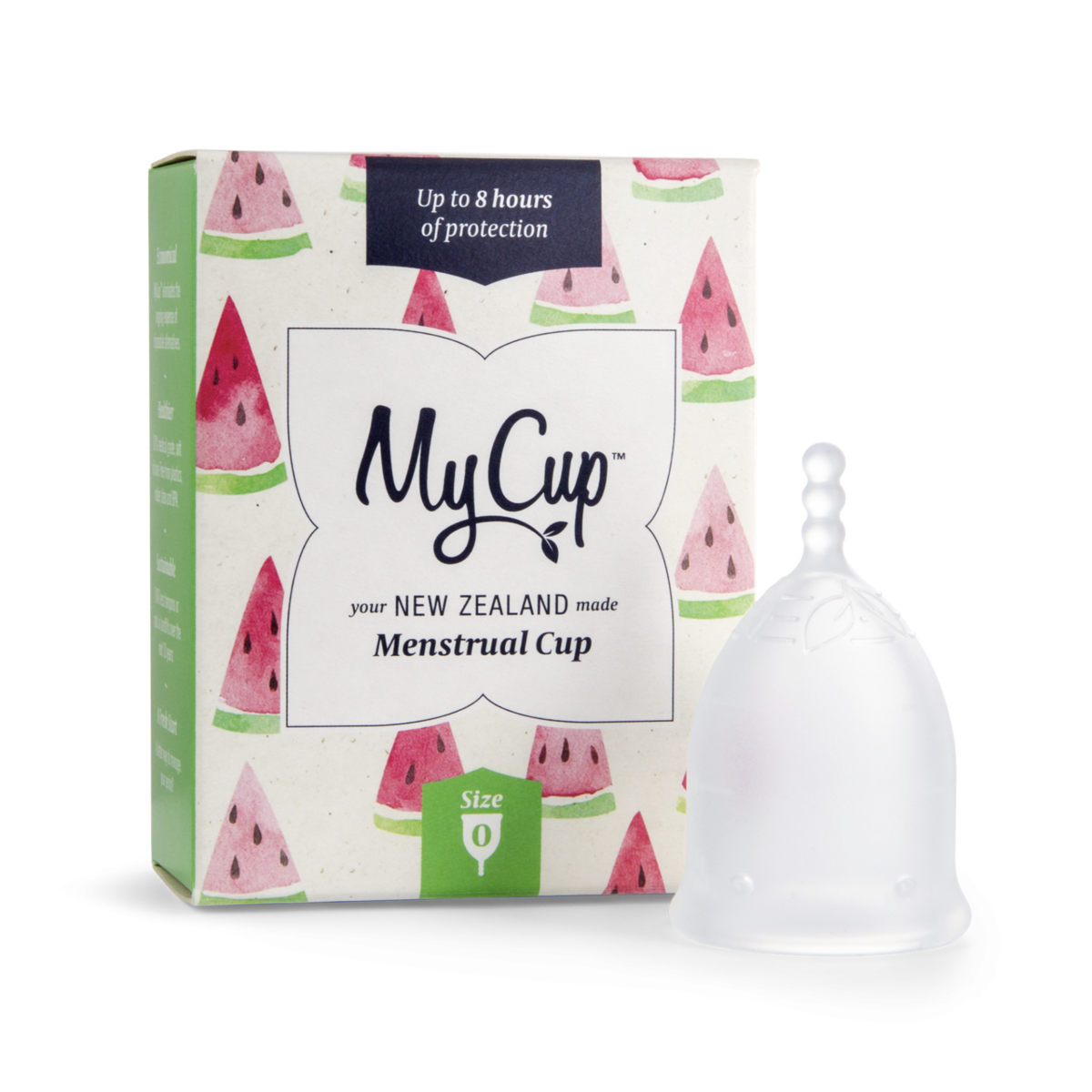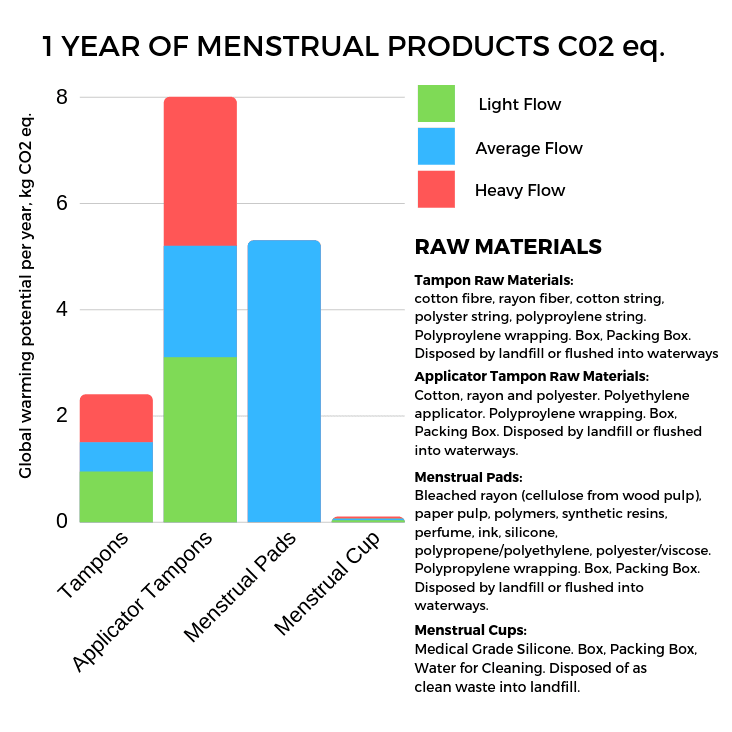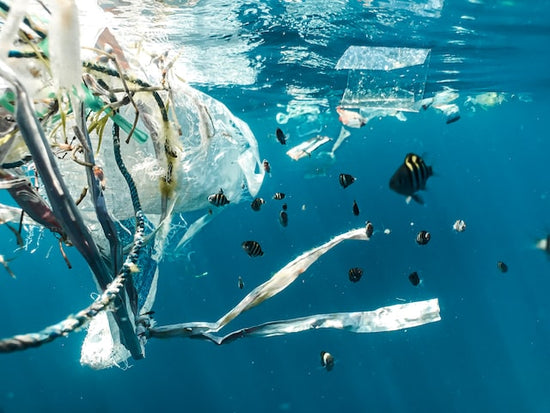
Learn more
The Environmental & Social Impact of our Menstrual Cups
Product comparison kg C02 eq over 1 year

A study done by Thesis Weir concluded that a medical grade silicone menstrual cup rates very highly in comparison to single use products over a period of a year.
Overall, the menstrual cup produces the least amount of fossil fuel depletion.
• A menstrual cup produces the least amount of abiotic depletion.
• A menstrual cup produces the least amount of global warming potential.
• A menstrual cup produces the least amount of acidification.
• A menstrual cup produces the least amount of eutrophication.
• A menstrual cup produces the least amount of waste per year.
• A menstrual cup does not change and vaginal pH
• A menstrual cup does not cause mucosal alterations.
• On a single unit basis the menstrual cup has the lowest environmental impact if used over a year.
The True Cost of the Impact on our Planet
Here are some of the environmental impacts of the manufacturing, use and disposal of all menstrual products.
-
Energy
A huge amount of energy is used globally to produce single-use menstrual products. This includes:
• Harvesting of raw materials: human energy, fossil fuels
• Manufacturing raw materials: electrical, thermal energy & fossil fuel energy
• Distribution and Transportation: fossil fuel energy
• Waste Management: thermal, chemical and electromagnetic energy
-
Environmentals
The following environmental impacts occur through the production and disposal of all menstrual products. This includes:
• Abiotic Depletion
• Fossil Fuel Depletion
• Global
• Warming Potential
• Acidification
• Eutrophication
• Waste
-
Materials
The main raw material used for the production of disposable menstrual products is cotton.
Other materials may include:
• Rayon fiber
• Polyester
• Polypropylene
• Paper pulp
• Polyethene
• Synthetic polymers
• Super absorbent polymers
• Bleach, optical brighteners
-
Abiotic Depletion
Abiotic depletion refers to the depletion of nonliving (abiotic) resources such as fossil fuels, minerals, clay, and peat.
-
Fossil Fuel Depletion
Fossil fuel depletion. Fossil fuel depletion is the extraction of natural gas, oil and coal reserves at a rate higher than nature replenishes them.
-
Global Warming Potential
Global warming potential. Global warming potential (GWP) is a measure of how much heat a greenhouse gas traps in the atmosphere up to a specific time horizon, relative to carbon dioxide.
-
Waste
Waste (or wastes) are unwanted or unusable materials which may pollute land or water ways.
-
Acidification
Ocean acidification is the ongoing decrease in the pH of the Earth's oceans, caused by the uptake of carbon dioxide (CO. 2) from the atmosphere.
-
Eutrophication
Excessive richness of nutrients in a lake or other body of water, frequently due to run-off from the land, which causes a dense growth of plant life such as algae blooms.
Social Impact of Reusable Menstrual Products
-
Cost
Real savings to a person over the life of a menstrual cup (10 years) equates to an average spend of $2400.00. This can contribute to real life consequences when you may have more than 1 person menstruating in your household.
-
Health
Menstrual Cups collect rather than absorbing, they do not contain harmful unknown chemicals and keep your vagina health balanced. A healthy body ensures you can get on with life!
-
Empower
Reusable menstrual products empower people as they don't have to worry about the financial burden of single-use products and they give them more freedom.
-
Waste
A person can dispose an average of 39.5 kgs of single-use menstrual waste over 10 years. A menstrual cup weighs an average of 15 grams and is disposed as clean waste into landfill at the end of its life.
-
Environment
A cleaner, greener planet and healthy waterways. A healthier planet for our family and future generations.





